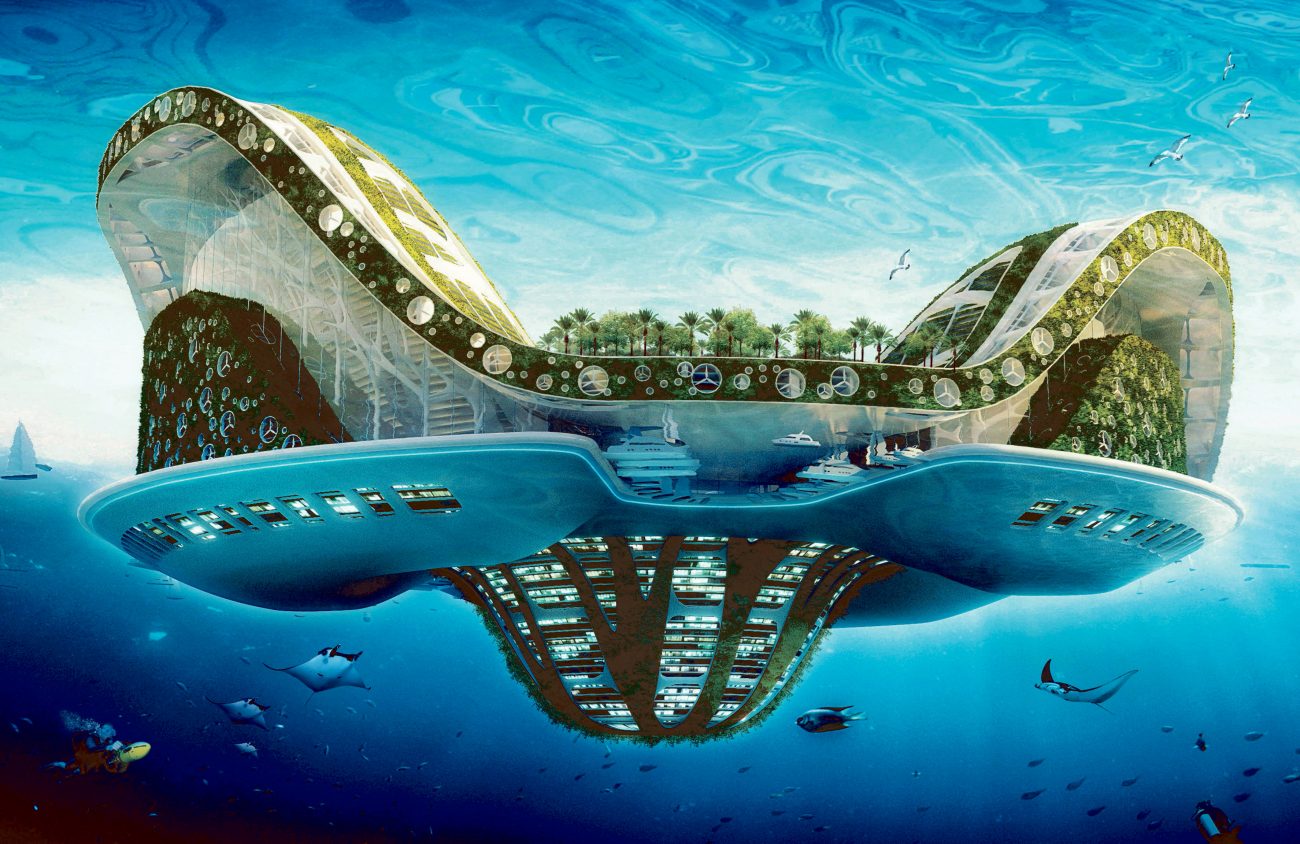“Survivalist Architecture and the Art of Resilience” is an engaging show that asks us to reconsider how we think about shelter. Artworks for Change, supported by the National Endowment for the Arts and the Nathan Cummings Foundation, organized the exhibit. They asked architects and artists to come up with designs to meet needs for housing in a dramatically changing environment.
The exhibition at the University of Oregon’s Museum of Natural and Cultural History includes submissions from around the world as well as displays describing similar research by UO scholars. If you go see it, you will walk to the large back room in the museum, past the permanent collection, where nearly any of the displays about evolution — natural or cultural — mirror the theme of Survivalist Architecture: to learn “to survive, adapt and grow…”
With both natural and human-made climate changes in mind, contributions — to name just a few — range from the “Lilypad” floating ecopolis by Belgium-born architect Vincent Callebaut to “Cardborigami,” an origami cardboard tent designed by Tina Hovsepain in Los Angeles; from a German building that incorporates algae into “Window Screens” to “EMPWER Coat,” a garment that changes into a sleeping bag.
The “Lilypad” is a plan for future cities, but the tent and coat/sleeping bag have been made and are in the room. A note on the floor in front of “Cardborigami” invites you to crawl inside.
Come on in! How would you feel about sleeping here?
Honestly, not that great. But it would be better than no shelter at all, which is the point. This tent, made of recyclable treated cardboard, can be folded up small enough to carry. It’s meant to be a temporary solution for people in crisis.
I imagine the tent is a hit with kids who come to see the museum on field trips. It is interactive like the table beside it set up for practicing origami skills.
The “Lilypad,” on the other hand, is not interactive, as it has not yet been built; it’s a proposal for a floating city that would house 50,000 residents. It is pictured off the coast of Monaco and meant to float along wherever the Gulf Stream takes it.
I asked a couple looking at a picture of the Lilypad if they would live on one.
The man answered, “Why not?” He pointed to a skyscraper in the picture, on the coast of an intensely crowded landscape: “Where would you rather live, here or…” He then directed our attention to the pad floating off the coast, “…or here?”
I saw his point.
Included in “Survivalist Architecture and the Art of Resilience” are photographs of relatively recent natural disasters. The pictures of Hurricane Katrina from 2005, for example, lend a sense of reality to the need for new thinking about our preparedness and response to climate change (as I write this review New Orleans is preparing for Tropical Storm Barry).
Some of the spectacular designs exhibited in the Survivalist Architecture show might feel like they were made for a distant futuristic world. Then, walking out through the museum’s section on climate change, you realize the future is now.
A large graphic in the museum’s permanent exhibit “Explore Oregon” measuring levels of carbon dioxide says it all: A line moves regularly across hundreds of thousands of years in a pattern of highs and lows, and then starting with 1950, goes up instead of down: It goes up and up and up.
